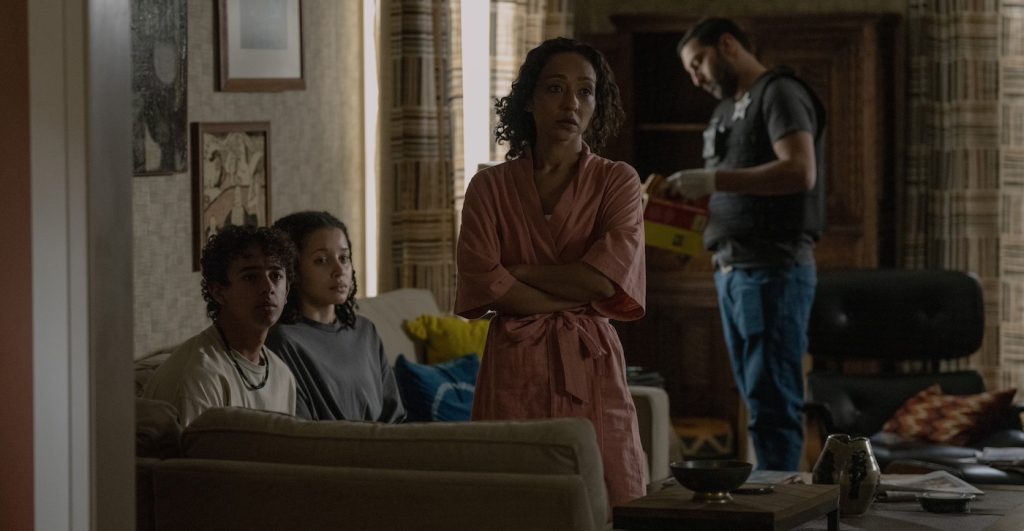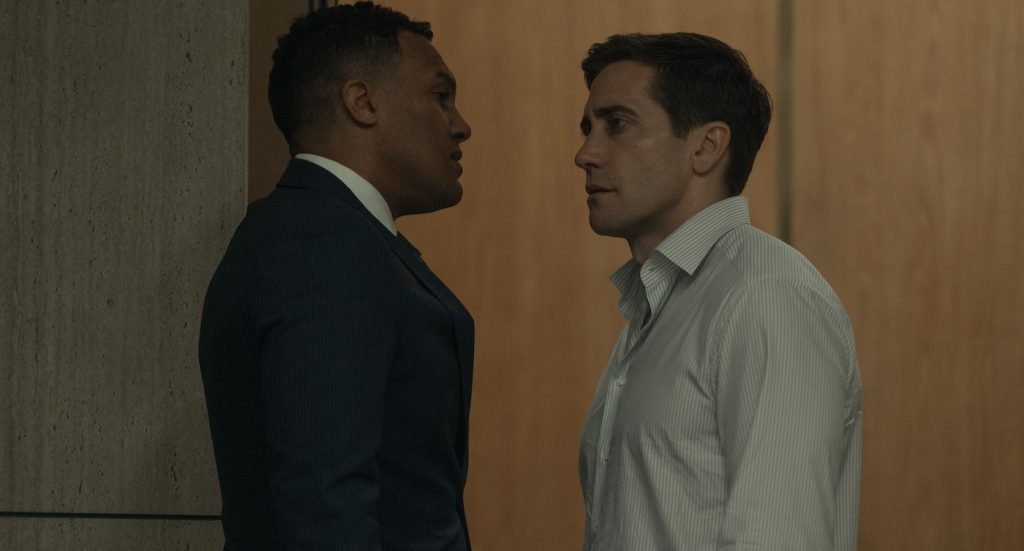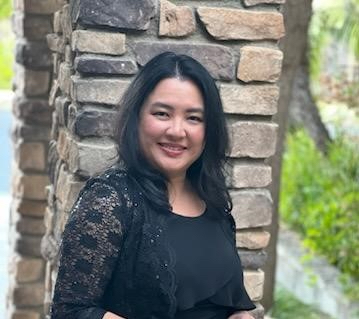Decoding Deceptive Design With “Presumed Innocent” Production Designer John Paino & Set Decorator Amy Wells
In part one of our conversation about David E. Kelley’s rigorously intense and captivating courtroom drama, Presumed Innocent, production designer John Paino and set decorator Amy Wells talked about the elaborate courtroom set and what it was like to shoot the Chicago-set series entirely in Southern California.
Thanks to Jake Gyllenhaal’s nuanced, Emmy-nominated performance, Rusty’s culpability on the grisly murder of his fellow prosecutor and lover, Carolyn Polhemus (Renate Reinsve), remains inscrutable until the very end. The series masterfully navigates his moral ambiguity as he oscillates between genuine penitence and heartbreak one moment and shamelessness and arrogance the next. Now, we delve into how Paino and Wells crafted the canvas for some of the most emotionally charged moments.
This show has an anachronistic vibe—the visual palette has a retro feel even though the story takes place in contemporary Chicago. The cinematographers drew inspiration from 1970s thrillers in creating a naturalistic, moody feel. How did that influence your designs and set dressing?
Paino: One of the things I referenced with director Anne Sewitsky and David [Kelley] on the color palette was the movie Klute, which has a saturated palette. Anne really liked that. Since we’re doing Chicago in Los Angeles, I made sure there was a certain urban feel and tried to steer clear of many things that are inherently L.A.
Wells: The Sabich family aren’t hipsters. They live in a traditional home and have good taste, but since they don’t have an interior designer, we wanted the design to be naturalistic. That was really important to Anne; she wanted layers upon layers on every set. She didn’t want things to look neat, but have a very naturalistic feel.
What elements about Rusty or the family did you want the décor to reflect?
Wells: I wanted to show his wife Barbara’s [Ruth Negga, also nominated for an Emmy] artistic eye, but also have it feel real and comfortable. That’s always my biggest hurdle, getting the place to feel real. You don’t want things to stand out and distract from the story—you want it to be part of the story.
Paino: It was a little hard because you could see so much of each room. How do you make every room look different and yet not drastically different? With all the archways between the rooms, you could see almost the whole house.
Wells: Anne wanted to go through the house with the camera, so that was important to her.

Many emotional scenes take place at their house, such as when Barbara puts Rusty on the spot and makes him tell the kids about his affair and that he is now a suspect in Carolyn’s murder. Was that interior on the soundstage?
Paino: We based it on a location, so you try to keep the windows the same for the establishing shots. The interior was an open, traditional home. Amy went out of her way to get some cool African-American art. Since Barbara is a gallerist, she knows artists, so she might have promoted some of the pieces when she ran the gallery. I showed Amy one or two pieces from my artist friends in New York City. They often trade art with other artists. When I was an artist, I would trade a drawing for someone’s painting that I liked. So that was some of the dressing.
Wells: My friend Angie’s art was there too—it was so good.
Paino: We picked out the colors and paintings, and Amy handled the fabrics. I was always interested in what she was getting and worked it into the overall schema.
Barbara is understandably distraught and furious since this is the second time that Rusty has cheated on her with Carolyn. At one point, she almost has an affair with bartender and artist, Clifton (Sarunas J. Jackson), when they go to his studio. What stood out in that space?
Paino: He was a light projection artist, so we had 3D projections on the walls in his loft that were moving and undulating. We found a white space studio and turned it into his loft/art studio. Amy found all this equipment for it, and we hired this company to put in their special projectors.
That gruesome crime scene looks like a complex set. Where was Carolyn’s house, where her body was found hogtied in her own living room?
Paino: We based that on a brick house in Koreatown and built a replica of it on stage. The house had a real bohemian flair to it. It felt appropriately modest like an artist’s place; I think that added a lot to her character.
Did your team dress that crime scene or was it more props?
Paino: Many departments were involved. I did some drawings of the trussing up. We looked at crime scene photos and talked to former police detectives who told us how a crime scene should look, such as using different colored police tapes for different parts of it. They weren’t on set, but they were extremely helpful. We had a general idea and a drawing of what the body would look like. Then, we worked with makeup. I assumed we would make a prosthetic body—I’ve never had a set where the murder victim was tied up and used an actual person. But the actress [Reinsve] was incredible; she actually did it, even though it would be very uncomfortable for anybody. She was a trooper.
What about the prosecutor’s office in the city, where several verbal altercations occurred between Rusty, Tommy (Peter Sarsgaard, another Emmy nominee), and the newly elected prosecutor, Nico (O-T Fagbenle)?
Paino: The office evolved. We were going to do it at a fabulous old bank, but at the last minute, it didn’t work out. So, we had to build and design it very quickly. I looked at many Chicago federal buildings and their offices. Chicago still feels like New York in the ’70s and ’80s— there’s not a lot of money to put into courtrooms or government offices. So, it feels beat up, and a lot of paper is still being used. So that informed the overall look. We kept to earth tones to give it a grounded feel.
Wells: It’s always hard to distinguish a character in an office. You try to give them some backstory with photographs of their family, their school, and how they relate to the city they live in.
Paino: There are so many procedurals done, and you want to find a way to make an interesting, realistic office that isn’t just all glass partitions.

The series does a fantastic job of maintaining Rusty’s innocence versus culpability all the way to the final moments!
Wells: Were you surprised by the ending? We shot more than one.
[SPOILERS!] So, there is a world where Rusty did it?
Wells: No, I think there’s one where Barbara did it.
Presumed Innocent is streaming now on Apple TV+.
Featured image: Ruth Negga and Jake Gyllenhaal in “Presumed Innocent,” now streaming on Apple TV+.



